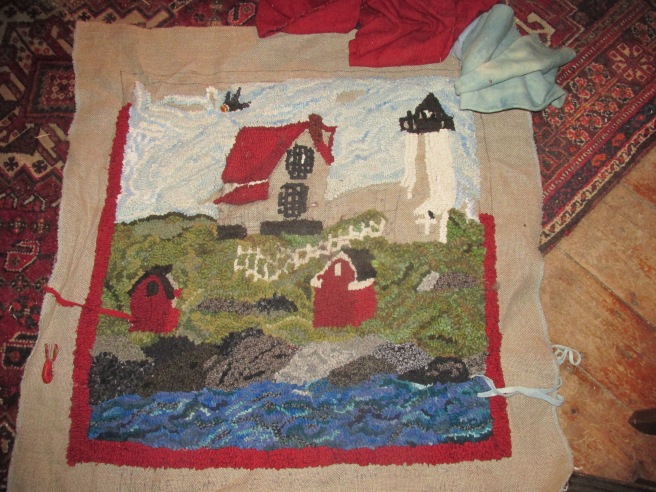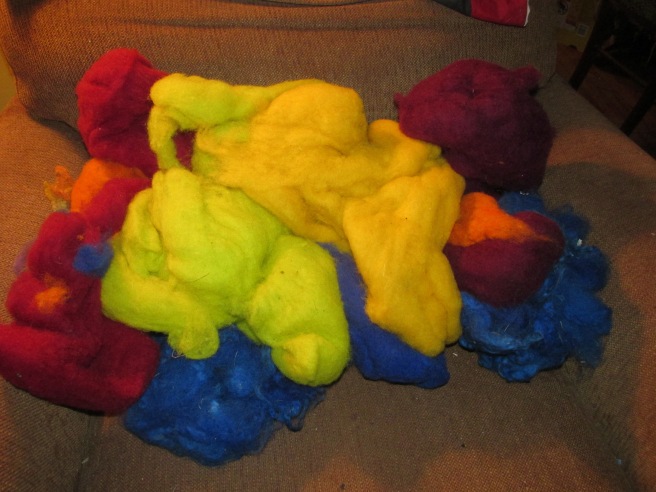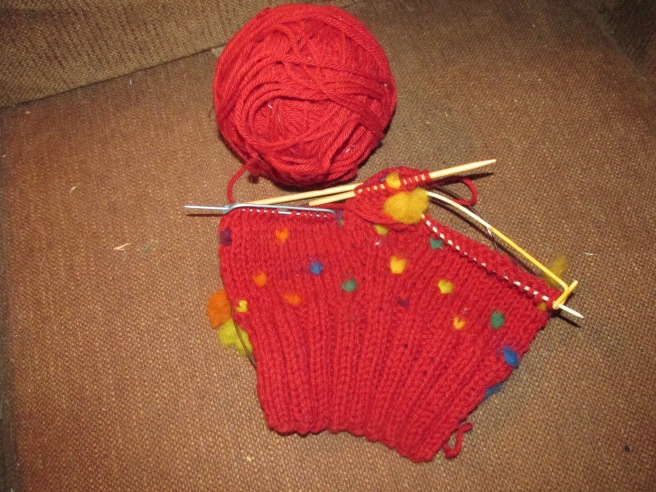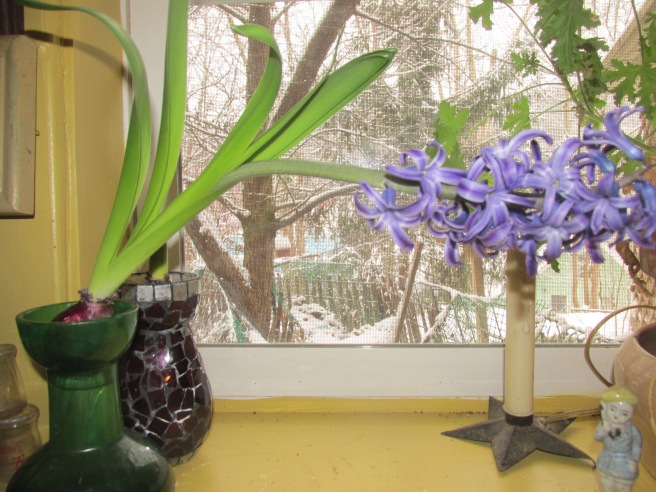HELLO
FIBERuary Day 8 Jill Horton Lyons part 2
Keeping the Sheep Alive or Living Harmoniously with Coyotes

Part 2
I spent lots of time that winter talking to farmers with guard dogs and reading about them. Many shepherds in New England have Maremmas- great big white dogs that look similar to Great Pyrenees. A friend put me in touch with a Maremma breeder in upstate New York. First I read Jackie Church’s book, and then I went out and spent a day with her. Although we’ve always had dogs and I grew up with dogs (my mother bred St. Bernards for awhile) I found the guard dogs pretty intimidating. Because of their size, because of their bark, and because of the not friendly way they eyed me when I approached their pasture. These dogs are not pets; they live full-time and year round with their stock. Which was also intimidating: What sort of a relationship does one have with a dog who lives with stock and not in the house? Would it work to have these dogs with all the kids who come to our farm?
These dogs are expensive (about a thousand dollars for a puppy, at least twice that for an older dog). And everyone I spoke with said that, given the intense predator pressure we had experienced, we needed at least two adult dogs. Way more than we could afford! I really liked Jackie’s Maremmas, and I liked the way her four homeschooled kids worked and played with them- the kids would be OK. But the money was impossible. I looked into rescue livestock guardian dogs. Many had problems, and we knew we didn’t know enough to consider taking that on. In the spring we got very, very lucky. An experienced breeder suddenly had a working female available. She’d gotten sick after whelping her pups and needed an emergency spaying. So she’d be available, as would one of her pups. We jumped at the chance, even though we knew we’d be sleeping with the sheep for yet another grazing season. (Too many coyotes for one dog to handle, and pups can’t handle adult work until almost two.) So Alka and her puppy Boro came to the Leverett farm in March of 2012
Immediately we had complaints from our closest neighbor. The dogs and sheep were right next to our house at night- but the neighbors wanted no barking between 10pm and 7am. We explained again about the 17 killed sheep; they explained that barking was not tolerable to them for any reason.
Now Leverett had passed a Right to Farm Law which clearly stated that recognized agricultural practices were allowed. The selectboard, however, initially treated the neighbors’ complaint as a dog nuisance problem. So there were meetings with the Selectboard, meetings of the Agricultural Commission, talks with the Farm Bureau. Things became quiet when the sheep- and dogs- and one of us after dark- went off to pasture. But of course grazing ended, and the dogs and sheep came home. And the complaints resumed.
So now what? We were legally in the right, but our neighbors were making our lives very difficult. Do we now just stop raising sheep? We decided we weren’t ready to give up! But we realized that to live in peace we would have to move.
The winter of 2012-13 started the serious farm search. We finally found a hillside farm on 50 acres in Colrain and a buyer for our Leverett house. We moved in late October 2013, jerry-rigging shelters for sheep and guard dogs, goats, and poultry. We’re gradually getting settled; there’s now a small sheep barn, poultry and goat house. We’ve had several open farm sheep shearings and we’re beginning to offer farm and fiber programs again. We’re tired a lot (starting a new farm when most of your friends are retiring is a challenge), but living in a farming community is a wonderful treat. And we’ve not lost one sheep to coyotes since the dogs arrived!
Now for a little factual information about livestock guardian dogs:
Various sorts of livestock guardian dogs (from now on, LGDs) have always lived with shepherds in any part of the world still inhabited by large predators. In many places, shepherds take their animals into the mountains to graze in summer. These shepherds are accompanied by herding dogs (like border collies, keeping the flock together) and by guard dogs. The LGDs are large, fierce when they need to be, but very much part of a unit with the shepherd and herding dogs.
In places where large predators were killed off (western Europe and the US), the LGDs gradually were transformed into people guarding dogs or simply companions, with livestock guarding abilities lost. In rugged terrain, though, old world shepherds still used both types of dogs. Dog breeds are a modern convention; these shepherds worked with the same kind of large dogs used by generations of local shepherds before them. Now many of these different types of dogs have been given breed names. In the book Livestock Guardians, Janet Vohrwald Doehner identifies 32 breeds of LGDs. Many are rare or not even available in this country, but she describes the dogs’ differing guarding styles, their relative ferocity, their weather tolerances, and other variables.
In the US, LGDs were not used until after 1973. The Endangered Species Act and a more nuanced understanding of ecological systems made the hunting and trapping of all large predators no longer possible. Predation, particularly in the west, became a major problem. Farmers and ranchers here were slow to consider LGDs, chiefly because American livestock practices had come primarily from Great Britain, and Great Britain was the earliest place wolves had been eliminated. Ray Coppinger at Hampshire College was responsible for bringing several breeds of LGDs into this country and placing them with ranchers throughout the west. People learned a lot about working with the dogs and they are now used in rural areas throughout the country.

The dogs bond with their livestock (initially with help and supervision) and understand that their job is the protection of their stock. Since canines are territorial, they chiefly work by keeping other canines away. This is done mostly by barking. They notice and will bark at any change in their environment. If necessary they will physically challenge any predator who continues to threaten.
They learn who belongs on the farm and will often accept a known herding dog moving their flock. They can be used to protect alpacas, horses, cattle and even poultry. It’s important to us that our farm is able to co-exist with our local coyotes.
Our oldest LGD, Alka, was pictured in part 1. She is a Sarplaninac (pronounced shar-pla-NEE-natz). These dogs originated in Macedonia (the name means “LGD from the Shar Mountains”). Her son, Boro, is half Maremma. And our youngest dog, Grisha, is also a Shar. He came from a ranch in Alberta, Canada. More photos follow.
We welcome farm visitors with appointments if you would like to meet the guard dogs. We also welcome phone calls or emails. Visit winterberryfarm.org for more information.























